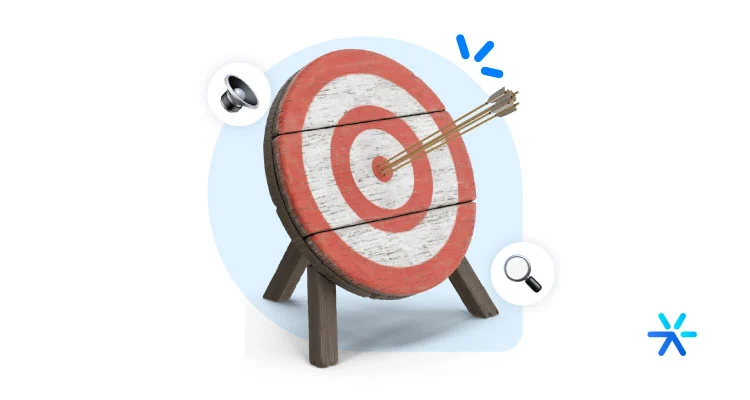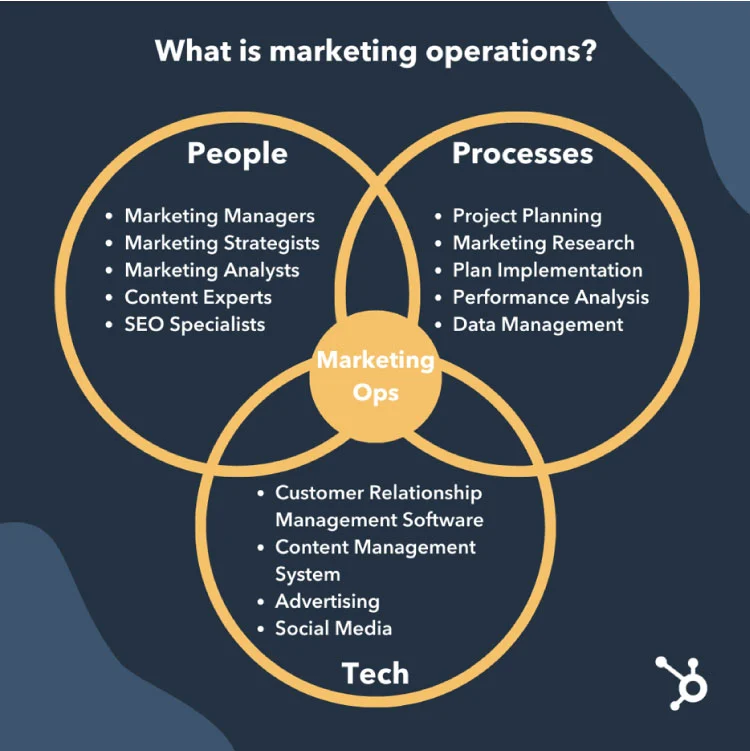Strategic Marketing: What It Is and 10 Ways to Get Started
How does your company or agency approach strategic marketing?
It is very common to find companies that work on both separately: marketing or business strategy.
In fact, besides being very common, this is the way most companies operate.
But business strategy has a very important role in marketing, and vice versa – marketing often helps to steer the direction of business.
Today we will talk about this dual thinking approach that will become increasingly urgent in companies across the country.
Today’s topic is strategic marketing. All set to get started? Then let’s get right to it because we have a lot to talk about.
What is Strategic Marketing?
Strategic marketing is a business modality that aims to reduce the separation between marketing and the business strategies of the company, making both modalities into one.
This concept may seem a bit obvious, but is it really?
For example: how many companies allow marketing to request direct changes in the product composition, for instance?
How many companies listen to marketing when it says it’s time to launch more products, or it’s time to streamline the product line?
Even better: how many companies listen to marketing when it says that the results of a specific campaign are low because:
- The product doesn’t meet the market’s expectations;
- The product’s price is too high;
- The market doesn’t quite understand how the product works;
- The product lacks acceptance in a specific region;
- The product would have higher acceptance in another region?
And the list goes on…
These are some examples related solely to a company’s product, but strategic marketing can address points far beyond that, assisting the company with a vision more focused on its audience and sales.
We’ll delve into this more practically in the topics below.
Check it out:
Medium-term strategic marketing

Medium-term strategic marketing is about coordinated actions with commercial intelligence to improve your results.
In the medium term, strategic marketing is related to setting joint goals and formalizing KPIs that can measure both the marketing’s impact on business and the business’s impact on marketing.
At this intermediate phase, strategic marketing seeks alignment of goals mainly in its production and ad creation.
Constant concerns include:
- Monitoring key metrics for paid media: CTR, ROAS, sales volume, CPC, CPA, etc.;
- Monitoring organic metrics: website visitor count, average reading time, and how many leads are being generated;
- Tracking internal company goals and objectives: quantity of qualified leads reaching the sales team, quantity of sales generated through inbound, etc.;
- Team goal tracking: deliveries, deadlines being met, team motivation, team scaling, etc.
Among others. In the medium term, strategic marketing aims to optimize all its actions, to spend less and produce more consistently.
Long-term strategic marketing
Long-term strategic marketing is somewhat different.
Its main concern is about business sustainability.
In other words, strategic and market actions that keep the company always competitive and standing out from the competition.
What we were discussing above about products are long-term strategies of strategic marketing.
We can mention a few others:
- Market analysis;
- Determining the marketing mix;
- Focus on research and development;
- Joint meetings to decide the fate of certain products;
- Actions planned together, to avoid supply shortages when demand is high.
In the long term, strategic marketing seeks a different perspective on its business strategies.
With the data and insight into the audience that marketing brings, its decisions are more accurate because they are accompanied by experience and observation.
What is the Difference Between Strategy, Tactics, and Operations?

So far, we’ve understood that strategic marketing, in its conception, has a focus on the medium and long term.
In the short term, decisions are made in each department, but always with the idea that everything done and decided must take into account the alignment of marketing with the business.
This means that, in the short term, each department has its independence but must align with this overarching goal – to become increasingly competitive.
Here, we’ll delve into the short term, showing the difference between the main modalities of strategic marketing: tactics, operations, and strategy as a whole.
What is Tactical Marketing?
As the name suggests, tactical marketing, within a strategic marketing framework, is related to the tactics used to achieve companies’ business objectives.
It is a strategy of very short-term, related to what is feasible for the company and what it is more capable of investing in.
For example: one of the main marketing tactics is content marketing.
It requires the creation of a writing and design team, hiring writers, social media managers, editors, and art directors.
From the strategic marketing perspective, is the company ready to make this investment in hiring?
The same goes for any other tactic.
Paid media, for instance, requires constant investment to garner results quickly.
Does the company have the budget for this?
Tactical marketing, as part of strategic marketing, deals with these questions.
Its answers will have an impact on the future, in the medium term.
MOps
MOps is the same as Marketing Operations, a term that describes the people, technologies, and business processes in a marketing and sales department.
In other words, these are the conditions that your company offers for your marketing strategies to flourish.
MOps, although related to marketing, is a business strategy with decisions made by the management.
For marketing to function, it’s necessary to structure MOps.
This is a reality in any company.
The more investment made in operations, the greater the return offered by marketing.
The image below, created by HubSpot, helps to understand this better:

How do Tactics and Operations Influence Strategic Marketing?
At the beginning of the article, we talked about how strategic marketing is the combination of business with marketing efforts, right?
That’s right.
Tactics and operations are the greatest practical examples of how this combination occurs.
Tactical marketing is directly related to MOps.
Some tactics are only possible through operational resources.
And some operational resources are only justifiable through their application in marketing tactics.
Thus, strategic marketing, in practice, operates through the relationship between these two modalities.

10 Ways to Start Strategic Marketing Today

Well, we’ve just determined that strategic marketing, in practice, works with the union of tactics and operations, focusing on business.
But this union can appear in various forms, with various results.
Here, we’ve separated individual actions, some short-term, others medium and long-term, to better illustrate how strategic marketing actually happens in companies and agencies throughout Brazil.
Continue reading to learn everything in practice:
Deep Dive into Data
Effective data management is crucial work and is part of MOps processes.
This tactic involves specialized personnel and business intelligence software, but can also be done through inbound marketing platforms – like lead qualification, for example.
Data, whatever they may be, need to be stored, processed, and consulted frequently.
Marketing departments that don’t work with data have much lower efficiency in achieving their goals.
It’s the obligation of any serious company about its marketing to provide the necessary tools and personnel to manage data uniquely.
Do What Works for You
Identifying appropriate marketing tactics for the company is a task for the marketing department.
However, deciding which tactics to apply or not is the joint responsibility of the entire company.
Data is presented, projections are made, and decisions need to be made collectively, always.
The marketing side brings possibilities and team competencies in presenting tactics.
And the business side brings limitations and business objectives as a whole.
Perform SWOT Analysis and Update It Regularly
The SWOT analysis seeks to present the company with its Strengths, Weaknesses, Opportunities, and Threats.
In Portuguese, it’s the FOFA analysis.
This is a concept worth discussing extensively.
Typically, the SWOT analysis is done by the marketing team, presented, changed, and forgotten.
Truthfully: it’s rare to find companies that take this analysis seriously or keep it as a guiding light in their actions.
And FOFA is one of the main forms of communication between marketing and the board, responsible for the company’s corporate directions.
Therefore, creating and updating the SWOT analysis is of utmost importance for any company and should never be ignored by those with decision-making power in the company.
Determine Your Marketing Mix
Like SWOT analysis, the marketing mix is a joint construction, an intense collaborative effort between the marketing team and business sectors.
We have an article here on the blog that defines what the marketing mix is and delves deeper into the topic.
But basically, the marketing mix is the 4Ps that every company needs to define:
- Price;
- Place;
- Product;
- Promotion.
The marketing mix is where strategic marketing has the best examples of collaboration in the corporate world.
Marketing and business need to collaborate to define these points well.
And the marketing mix is also a great definition of what marketing itself is.
Its 4Ps (and its expansion into 8Ps, adding Research, Planning, Production, and Publication) define marketing as a strategy – bringing a product to market, making it available to people.
Establish a Solid Hierarchy
Creativity is the backbone of all marketing departments.
And for creativity to flourish, other people need to take care of operational and strategic aspects.
Hierarchy addresses this issue precisely.
With managers reporting to the director and the director reporting to the rest of the board, each person’s focus and individual talents are better utilized.
Frequent Competitive Analyses
Strategic marketing always seeks to make informed decisions since they impact not only campaign results but the entire company.
It’s very common for marketing departments or agencies to conduct a competitive analysis at the project’s beginning and that’s it.
Everything follows from there and goes on forever.
Strategic marketing requires constant vigilance in new trends, new companies entering the market, new technologies, etc.
These analyses keep not only the company’s marketing always competitive but also the companies themselves as a whole.
Frequent Opinion Surveys
In strategic marketing, knowing consumers’ opinions about the brand is a fundamental and extremely important point.
Remember that strategic marketing deals with well-informed decisions.
And one way to have this information is by conducting frequent opinion surveys.
There are several ways to obtain this information.
Here on the blog, we have a very interesting article on the topic, with 5 resources that will help you conduct your survey and suggestions for questions as well.
Focus on R&D
Research & Development are crucial parts of strategic marketing.
And we’re not just talking about new products: in fact, innovations within the marketing team are also great investments.
Every marketing department needs to have a dedicated person or team to find new ways to do things well.
Improvements to the website, new types of ads, new tools, etc.
With this, your marketing team is always closer to delivering what it proposes: continuous improvement of the company’s business.
In the product aspect, marketing also needs to offer a strategic vision of its constant development.
We’ll talk more about this below:
Continuous Product Improvement
In his book “Ogilvy on Advertising,” advertising baron David Ogilvy says:
“Never write an ad you wouldn’t show to your family. You would never lie to your wife. So don’t lie to mine.”
In the chapter, Ogilvy was talking about how advertising is entirely dependent on the product.
If the product isn’t good, there’s no ad in the world that will make it successful.
For the marketing department to always tell the truth, the product being offered needs to meet consumers’ expectations.
In other words, the product needs to have market value.
Strategic marketing teams need to always measure the public’s acceptance of the product and have the freedom to suggest changes for the better.
The 4 Phases of Strategic Marketing

Well, so far we’ve managed to clarify the processes of strategic marketing quite a bit, right?
We understand how the two collaborate, what their common tools are, and we’ve outlined some actions as examples of this collaboration.
Now we need to talk about how the implementation of strategic marketing works in practice.
Where to start? And what are the next steps?
That’s what we’re going to discover together now. Stay tuned:
Planning
Strategic marketing planning involves all actions of study, conceptualization, branding, competitor research, and whatever else is necessary to put the next actions into practice.
We mentioned some throughout this article.
Performing a SWOT analysis, for example, is one of the first steps in planning.
In addition to external research – focused on the market – it’s also necessary to research internally, to understand what points your company still lacks before applying strategic marketing.
Analysis
After the planning stage, it’s essential to analyze all the information gathered together.
This will be the first joint action of strategic marketing: aligning the information obtained is the same as getting marketing and business working collaboratively.
For example: a competitive analysis is easier to conduct by a team that knows the market closely, that is directly involved in it.
Development
The joint development part is related to the conception of your product, taking into account the marketing mix I mentioned earlier.
The price, the product itself, the place, and the marketing techniques for its promotion and dissemination need to be discussed together, not monopolized by one team or another.
Implementation
Once everything is planned, analyzed, and developed, it’s time to put everything into practice and present your product to the market.
This simple four-step process we’ve shown has a name: marketing.
That’s why the term strategic marketing is so difficult to explain.
In theory, marketing should already be strategic.
It should already be collaborative and involve practically the entire company.
When it comes to implementing and measuring results, marketing needs to share the information it has with all interested sectors of the company.
This exchange allows the product to improve continuously, ads to become more optimized, and success to come faster and more assuredly.
I hope this article has helped you understand better what strategic marketing is!
But we also need to make it clear that, most of the time, the distinction between strategic and non-strategic doesn’t exist in most companies.
Everyone expects strategic marketing, but few take real and concrete actions for strategic marketing to happen.
We can help you with that.
Start your free trial with Leadster today. Our chatbot can easily help you in pretty much all these steps.
The best part – the trial is free for 14 days, no credit card required!
I’ll be waiting for you.
Thank you for reading, and until the next article!








